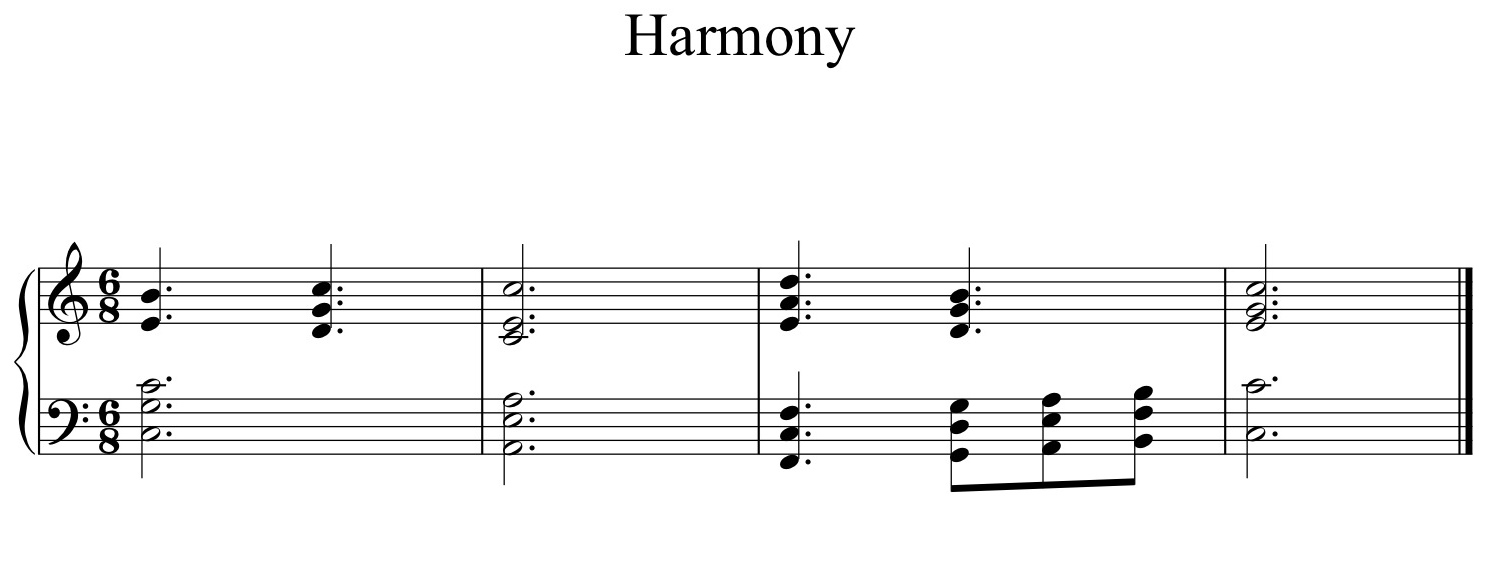Harmony and tonality
Tonic. Unpredictable and steady looks
Single note or tone on their own, next to nothing isn’t existing, they can’t be named a bit of audio, acknowledge? Audio structure is just an audio system centered on particular high-rise associations and amounts. Such systems – there is definitely a specific audio that’s the spine (frequently tunes end-on these looks and produces a feeling of achievement ringers). Therefore, this research audio is known as looks that were constant.
Among the stereo system always’ constant audio there’s among the many strong (primary) showing. This is actually the primary support. For instance, we’ve something of do-re-mi-FA-Sol-La-Si, it would be the audio. Looks that are continual cannot occur with no unpredictable. Unpredictable looks, on the other hand engender a sense of musical suggestions that are incomplete. Pay attention to a typical example of the finish of the melody on an audio that is unstable: You’ve any sensation isn’t total tune? Yes the tune stops on an audio that is unpredictable. It is like she draws on another notice it is called seriousness. The tune seems total, and stops about the tonic. Sustained sounds can’t exist without the unstable. Unstable sounds, on the contrary engender a feeling of unfinished musical ideas. You have any feeling is not complete melody? Yes, because the melody ends on an unstable sound. It’s like she pulls another note — it’s called gravity. The melody ends on the tonic, and sounds complete.
Gravity and resolution
Gravity is an expectation of transition from one sound fret (below) to the other sound on the basis of kinship. And the transition from one sound to another on the basis of gravity is called the resolution. Way. The designation and the name of the scale steps. What is the way? The communication sounds, their relationship in the mode based on certain physical patterns (acoustic) of the music and the experience of all mankind (both folk and classical music). The number of sounds in the mode is limited mainly in the way comes with 7 sounds, sometimes more, sometimes less. The modal system covers all the octaves, giving the same steps to the same value.

The stereo system is fretted from by variations? Quite simple in a stereo system may be frets “audio alphabet” program. As the lad is just a system in that the audio possess a partnership (link) and not solely the peak. Note, as well as in specific the triad constructed about the tonic is known as the tonic triad, in polyphonic audio, the part of research component isn’t merely a tonic but a tonic triad (generally, main or small). The harmonies remainder are compared to tonic unpredictable. Lad as you of the essential way of phrase that is audio. Lad — one of business of looks in height’s primary symptoms. It’s thought the modal framework of audio entails a couple of things: color and voltage. Voltage is done by various means, among which is really a mixture of harmonies and steady and unpredictable looks. Color well-defined the high rise procedures of the size actions with regards to its tonic. The balance that is comparative and uncertainty. Uncertainty and balance are comparable conditions, tune or sound in just one style could be suffered, although not in another. Assume we’ve of do something re-mi-FA-Sol-La-Si, the audio listed here is lasting, as well as in the machine Si-do-re-mi-FA-Sol- La.
Major. Major twist. Gamma. Natural major
Major scale (or major) — lad, which is formed on the tonic major triad. The word major, characterizes the major third, which to the greatest extent decides the color as well as in the triads. Major indicated by the word.
Major triad formed on the tonic, is called the tonic triad. His sounds also have a name: lower sound — prima tonic (or tonic), mid — tonic, the third, the upper — tonic Quint.
- Gamma is the location of sounds from tonic to tonic, it expresses a pattern of Lada.
- Major natural gamma
- Ascending and descending major, natural gamma
- Very clear she is depicted in the figure from the article Sound. The pitch of the sound. From notes:
- Degrees of the scale
- Natural major scale consists of two tetrachords that are separated by a large second. Look at the figure.
Tonic, sub dominant and dominant — the main stage of the degree, because what are the grounds major chords. Why scale tones have such names? The names they are given in order of symmetry of gravity. Dominant is a perfect fifth above the tonic, the sub dominant — in pure fifth below the tonic. The median is located between the tonic and dominant, but sub mediant between tonic and sub dominant.
The degrees of the major scale
The introductory notes are strongly drawn towards the tonic, so called, and ascending and descending indicate the direction of gravity:
The degrees of the major scale
Tone is the altitude position of the fret. The indication of tonality involves two things: the name of the tonic and the name. As a tonic you can use any degree of the scale (primary and derivative). Tone, and more precisely its internal structure always remains the same regardless of what kind of sound we have taken as the tonic fret. To indicate the keys (except C major) you will have to use accidentals. In this case, the marks will be submitted to the key note signs will always be homogeneous or only sharps or only flats. If in the key of C major to take the dominant and make her tonic, to build the tonality of g major, we need f♯. Go ahead and take the already dominant in that key — it will be Re. Now we construct the key of D major for this, in addition to we need To. If you repeat it 5 more times we get key C♯ major, which, in turn, has 7 sharps. Music theory does not forbid you to have a greater number of characters, just generally not used more than 7 characters, if you continue to build key, we have to use double sharps.

The figure below shows the receipt of the sharps in order. The sharps are added in the pure fifth up from f, since the key is also located at the fifth clean up. The order of appearance of sharps FA-Do-Sol-Re-La-Mi-Si. Last sharp (in every key) refers to the rising of the introductory tone. Build flat tonalities opposite Dieskae. If Dietrich keys from the tonic fret we’re going to clean up and take the fifth the dominant, the flat — we’re going on a perfect fifth down and take the sub dominant. In C major we take the sub dominant FA, make it a tonic and build a major scale, the first flat — Si. Having done this 6 times, we get the key major, which will be 7 digits. If you continue further, you will also have to use double flats.
Flat keys natural major
The order of appearance of flats Si-Mi-La-Re-Sol-Do-FA, i.e. the reverse order of sharps. The circle of fifths. Anharmonism major keys. The circle of fifths is a two — way sequence of keys, reflecting the degree of their relationship. In the picture below in red ejecta major scale shown, and the green a minor way (about it later). Anharmonism tonalities — the equality of keys. Harmonic and melodic major.Quite often the music is used a major scale with a lowered VI degree, this type of major is called harmonic major. Due to the fact that the stage is lowered it is sharper tends to V. this is increased second between the VI and VII degree gives this tune special color. Construct the harmonic major notes: do — Re — Mi — FA — Sol — La — Si. Often found in another kind of major, melodic major. It differs from the natural major is that is lowered already two steps VI and VII. Melodic C major: do — Re — Mi — FA — Sol — La — C. A minor way. Natural minor. Parallel key.

